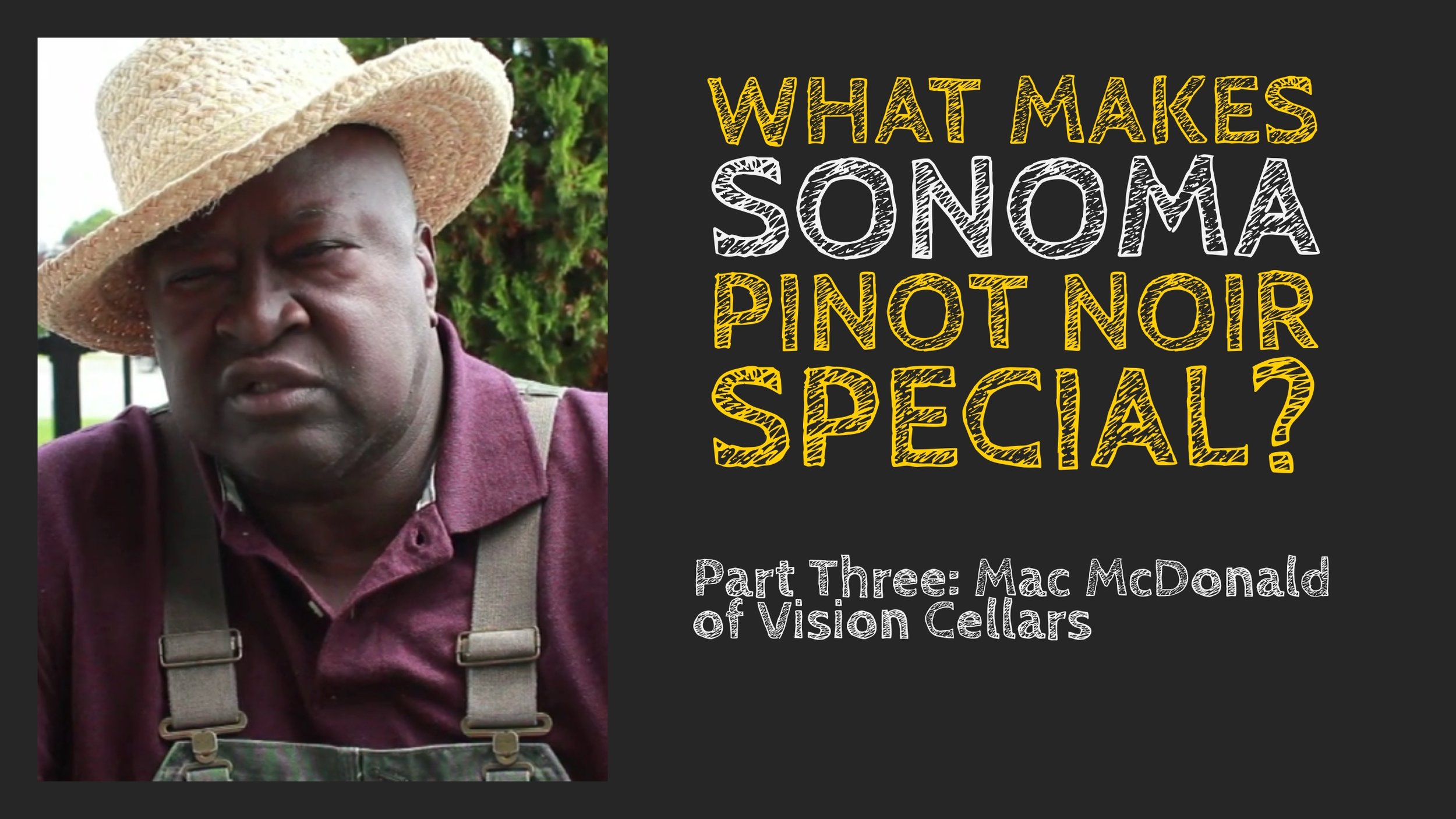Mac McDonald:
Pinot Noir is what we do. Folks often ask me, why do you choose or select the toughest type of grape? Well, number one, in California, Northern California, and you want to make Cabernet unless you come out of Napa Valley, folks normally think it's not that good. So I thought if I could craft a great Pinot Noir, because Burgundy is the same grape, that if I could craft a good Pinot Noir then I think I could play with the big dogs. I'm pretty competitive in everything that I do so I want it to be good, I want it to make a mark for doing what I was doing. And at the time as a winery in California called William Seylem that I thought was doing a great, great job and then I also thought Sanford down in the Santa Barbara, those are the only two great Pinot producers that I thought was really, really good and I thought if I could make a great, great Pinot Noir then I could compete.
That's why they was selected. I had no idea all the crazy things about that grape even exists but I'm a pretty fast learner so I learned a lot about it. Well, it's a real challenging thing because if you think normally about the clones of a Pinot Noir grape, the challenge of growing the grapes, making the wines and selecting the right yeast and keeping the temperature at a certain control. To start off with, you have to really know your soil condition and really match your soil condition with your root stock. Root stock, how much water you have, the soil condition, how much you want to grow per ton, like a Sauvignon Blanc, it doesn't care, it's like a weed, you can just overload it with tons and tons of fruit. In the Chardonnay world, let's say, you have about 50, 60 plus clones some place in their different varieties, different clones. Same with the Sauvignon Blanc, Chardonnay and Cabernet Sauvignon, you have about 50 or 60 there.
But in the Pinot world, you have about 11,000 clones. These things just mutate, you start out, for example, with a 667 or a 777 clone and you may have one side of the road, you may have this clone planted over there, the other side another different clone and they'll completely go different flavors. Then you get into the pruning process of it. You talk to different Pinot growers and they have different methods of pruning and I just like a little bit of exposure to my fruit. So it's really consistent with leaf picking, in other words, if you get more sun on the east side you may wanna leave a little bit more leaves on that. You don't get enough on the west side of the vine you may want to pull some of that off. So it's a constant juggle of trying to get the ripeness, in the evening ripeness, on the fruit itself.
Austin Beeman: Isn't that challenging?
Mac McDonald:
Yeah, it's pretty challenging and like I said, we all, a lot of us have different thoughts about it but I think we all come into an agreement. That's why we've been able to craft better Pinot Noir in California. It used to be, like I said, Brett William was the king of it but now you've got a lot of folks making great Pinot Noir. In fact, even here in the state of Ohio, they have a Pinot program, it's doing pretty good. I gave a big lecture at Ohio State several years ago on the crafting on Pinot Noir and I came back and tasted what some of the things that they made and they doing pretty good. But it's a real tough grape to grow. There's a whole bunch of choices of selections of yeast that you use to ferment your fruit and that makes a big difference in the end result of the flavor.
The type of yeast you use helps determine the flavor you get on the end and then you have the other extreme of that, barrel selections is really, really critical because in my mind, a Pinot Noir should be treated like a white grape. It's a delicate thing. You can get too much wood on it or you can get too much alcohol in it. I'm not saying that if you don't like high alcohol Pinot Noir you shouldn't buy them but I'm just thinking that 13.5, 14.5, in there, is ideal alcohol level for a Pinot Noir. Now with that said, sometimes your vineyard, your fruit is just not there. Out of 25 bricks, equivalent to a 13.8, 13.9 of Pinot Noir and so you may have to let the alcohol get up a little bit higher because it's a little bit riper, so the riper it is, the higher the sugar content and the higher the sugar content is, higher the alcohol is gonna be in the finished product.
So it's kind of an up and down thing with that grape in that sense as well.






















